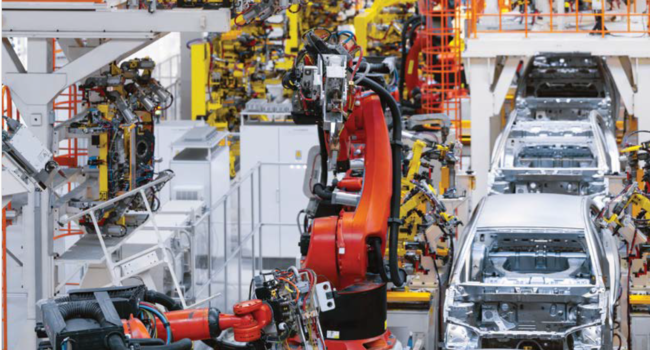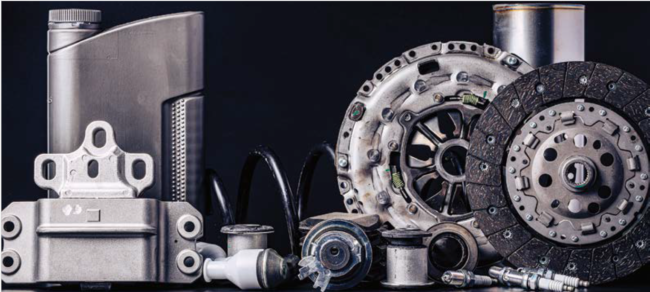
Domestic demand continues to drive a large share of industry revenues; debt metrics and liquidity are likely to remain comfortable for most exporters despite potential decline in margins and increase in working capital requirements, according to ICRA.
ICRA expects the revenue growth of the Indian auto component industry (represented by a sample of 46 auto ancillaries with aggregate annual revenues of over INR3,00,000 crore in FY2024, accounting for around 50% of the industry) to ease to 6-8% in FY2026, against 8-10% projected earlier, if there is mid to high single-digit revenue decline in exports to the US, stemming from the tariff-related impact. The steep increase in import tariffs imposed recently by the USA is estimated to burden the entire supply chain with an incremental cost of around INR9,000 crore, which will need to be borne by the US consumers, US importers, and Indian exporters. The extent to which the Indian auto component exporters share the cost burden will be contingent on their competitiveness and the price elasticity of the products exported. Operating margins are likely to moderate by 50-100 bps against earlier estimates, to 10.5-11.5% in FY2026, in a scenario where 30-50% of the incremental costs are to be absorbed. Specifically for exporters, the decline could be higher at 150-250 bps. Nevertheless, the situation is evolving as tariff actions have been fluid and trade negotiations are ongoing. ICRA expects debt metrics and liquidity to remain comfortable for most of the exporters in its sample set despite the potential decline in margins and increase in working capital requirements.
The Indian auto component industry demand continues to benefit from a diversified mix of end-user segments and geographies, with over 70% of its revenues coming from domestic sales. The US constituted only close to 8% of the overall industry revenues in FY2024. Export of auto components to the US grew at a compounded annual growth rate (CAGR) of 15% during FY2020-FY2024. Factors like rising supplies to new platforms because of vendor diversification by global original equipment manufacturers (OEMs)/Tier-1 parts manufacturers, higher value addition, and favourable forex movement, among others, have benefitted Indian auto component manufacturers, despite muted new vehicle registration growth in the US vis-à-vis pre-COVID levels.
Giving more details, Shamsher Dewan, Senior Vice President and Head – Corporate Ratings Group, ICRA Limited, said: “While the auto component suppliers with whom ICRA has interacted indicate that most of the incremental costs would be passed on, however, as in any buyer-supplier negotiation, the extent of pass-through would depend on the supplier’s criticality, share of business, competition, and technological intensity of the components supplied. If, on an average, 30-50% of the incremental tariff costs are to be absorbed by the Indian auto component exporters, we estimate an earnings impact of roughly INR 2,700-4,500 crore, which is 3-6% of the operating profits of the auto component industry and 10-15% of the operating profits of the auto component exporters. Select entities have manufacturing facilities in the US, and supplies from those units would be shielded from the cost impact of the tariff. Nevertheless, given the increased economic uncertainty, decline of automobile sales volumes, and tepidness in the replacement market in the US remain the key downside risks. Pricing pressures can also arise in other export geographies such as Europe and Asia, where Chinese competition would likely increase.”
A 25% tariff was imposed on imported key automobile parts (engine, transmission, powertrain, and electrical components) vide an order dated March 26, 2025, effective not later than May 03, 2025. About 65% of India’s auto component export basket is estimated to fall under the 25% import tariff category. Prior to this, a 25% tariff was imposed on the import of steel and aluminium content in auto parts vide orders dated February 10 and 11, 2025, effective March 12, 2025. Subsequent to the order dated March 26, 2025, a reciprocal tariff of 26% was imposed on exports from India to the US, on which there is a temporary pause for 90 days, but with 10% ad valorem duty still applicable. Products that fall under the US-Mexico-Canada Arrangement (USMCA) are exempt at present. ICRA understands that the components exported from India to the US had an import duty of 2.5% earlier.

ICRA believes that loss of business share with customers is unlikely in the near term, as switching costs are high and product development, testing, and approval cycles are reasonably long. Further, there could be incremental opportunities for India arising from cost competitiveness vis-à-vis Chinese components (if the same level of tariff continues), albeit over the medium term. Some players have indicated additional enquiries from US importers in the last few weeks.
Article Courtesy: ICRA Ratings
Images used for representation only.
Courtesy Envato Elements.
This article was published in TAGMA Times




COMMENTS